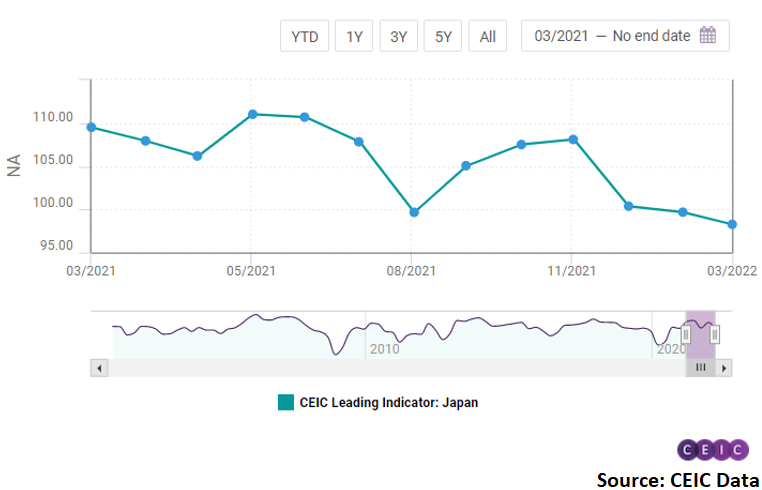CEIC Leading Indicator for Japan at 14-month low in March


Japan’s CEIC Leading Indicator fell to 98.3 in March 2022, from 99.7 in February, according to the flash estimate. This is the lowest reading of the non-smoothed indicator since January 2021 and the third consecutive decline after continuous acceleration in Q4 2021. The moderation in the CEIC Leading Indicator throughout Q1 2022 suggests that Japan’s economy might have slowed down in this period. The smoothed indicator dropped below 100 for the first time since November 2020 and has been decelerating since June 2021, signaling that the peak of the business cycle might have passed in Q2 2021.

Motor vehicle sales in Japan continued to struggle in March, dropping by 16.3% y/y as the global shortage of microchips is halting production. Consumer confidence dropped to its lowest point since the first wave of the COVID-19 pandemic, as households fear inflationary pressures fueled by the war in Ukraine. Corporate manufacturing sentiment rebounded slightly in March but is still below Q4 2021 values. OECD’s CPI based real effective exchange rate (REER) index dropped to its lowest level since 1982, indicating a weak JPY but at the same time improving trade competitiveness. Japan’s TOPIX small index closed in March at practically the same level as February, despite a significant drop in the first 10 days of the month.
More about Japan's CEIC Leading Indicator here
Further data and analysis on Japan’s economy are available on the CEIC Japan Economy in a Snapshot – Q1 2022 report.